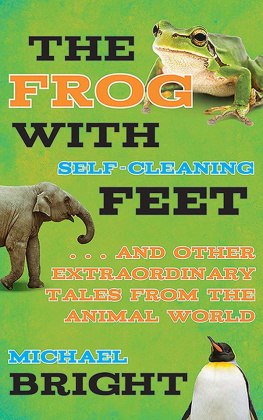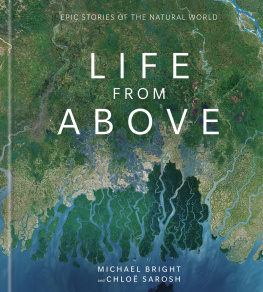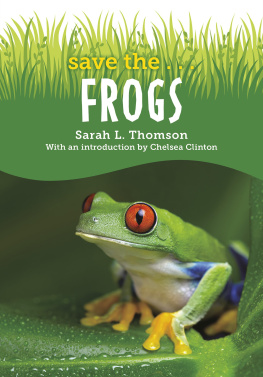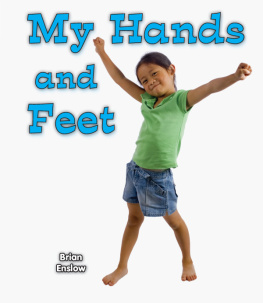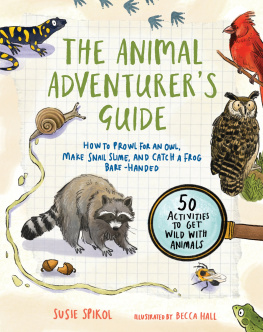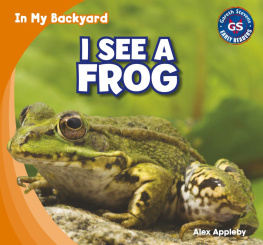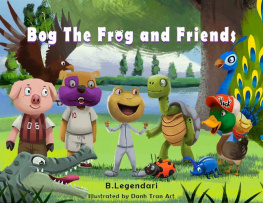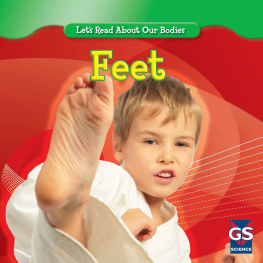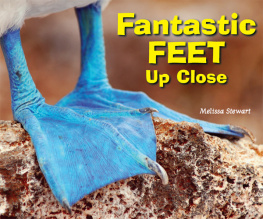THE FROG WITH
SELF-CLEANING FEET
THE FROG WITH
SELF-CLEANING FEET
... AND OTHER EXTRAORDINARY
TALES FROM THE ANIMAL WORLD
MICHAEL BRIGHT

Copyright 2012, 2013 by Michael Bright
First published in Great Britain in 2012 by The Robson Press (an imprint
of Biteback Publishing Ltd.), Westminster Tower, 3 Albert Embankment,
London SE1 7SP.
All Rights Reserved. No part of this book may be reproduced in any
manner without the express written consent of the publisher, except in
the case of brief excerpts in critical reviews or articles. All inquiries should
be addressed to Skyhorse Publishing, 307 West 36th Street, 11th Floor,
New York, NY 10018.
Skyhorse Publishing books may be purchased in bulk at special discounts
for sales promotion, corporate gifts, fund-raising, or educational
purposes. Special editions can also be created to specifications. For
details, contact the Special Sales Department, Skyhorse Publishing, 307
West 36th Street, 11th Floor, New York, NY 10018 or
info@skyhorsepublishing.com .
Skyhorse and Skyhorse Publishing are registered trademarks of
Skyhorse Publishing, Inc., a Delaware corporation.
Visit our website at www.skyhorsepublishing.com .
10 9 8 7 6 5 4 3 2 1
eISBN: 978-1-62873-475-1
Library of Congress Cataloging-in-Publication Data is available on file.
ISBN: 978-1-62636-075-4
Printed in the United States of America
CONTENTS
INTRODUCTION
Since we shared our caves with other animals, we have been fascinated by what they do and how they relate to us; these beasts of the field, fowl of the air and fish of the sea never fail to surprise us. The ancients painted images of the more familiar animals on their cave walls, worshipped them, tamed them and ate them. Nowadays we study them (and eat them and pollute them into oblivion), but whatever we do to them, somehow most of them keep bouncing back. This miscellany of animal stories might offer a few reasons why.
Take the frog with the self-cleaning feet. Whites tree frog Litoria caerulea, named after the English surgeon and botanist John White (c.17561832), produces sticky mucus on the bottom of its feet at every step. Channels on the bottom of the feet leave dirt behind and new mucus is secreted in its place, so the frogs feet are always clean. And we can learn from this remarkable creature: researchers believe this could lead to self-cleaning bandages and self-renewing adhesives.
In fact, frogs, and their warty relatives the toads, are amazing animals. While most frogs swim, there are few that fly. Wallaces flying frog Rhacophorus nigropalmatus uses the webbing between its toes like four tiny parachutes and glides safely to the ground or an adjacent tree. Then there are the jumpers, like the rocket frog Litoria nasuta, which can make 2-metre (6.6ft) leaps by storing energy in its tendons and releasing it suddenly to enhance the performance of its muscles. Spadefoot toads have a hard extension on their hind feet, like tiny pick axes, that help them burrow, digging backwards into the ground. The wrinkly Lake Titicaca frog Telmatobius culeus does push-ups on the lake bed to increase the flow of water around its body to gain more oxygen in an oxygen-depleted environment. The Bornean flat-headed frog Barbourula kalimantanensis breathes without a lung and the wood frog Rana sylvatica freezes almost solid in winter. But, thats enough about frogs.
This little book includes stories from across the animal kingdom: the honeypot ants Myrmecocystus mendax that become living storage jars; the barnacles Amphibalanus amphitrite which stick to rocks with a glue that hardens in the same way human blood clots; the leaf beetles Gastrophysa viridula which have no fewer than three types of tiny hairs on the bottom of their feet, each with a different stickiness and a different function; and a shocking pink centipede Desmoxytes purpurosea... yes, shocking pink!
Then, there are the things nature invented first: the chemical chitosan in crab shells that might lead to a paint that actually heals itselfinstant scratch repair on your car; the three-layered shell of an Indian Ocean deep-sea snail Crysomallon squamiferum that could give rise to better body armour for the military; sea urchin teeth that are designed to stay sharp; and the flippers of humpback whales Megaptera novaeangliae that have features being drafted in to the design of more efficient ocean turbine blades and helicopter blades.
And whod have thought that juvenile birds could be scared to an early death just by hearing a predator; that female short-finned pilot whales Globicephala macrorhynchus are one of the few animals that go through the menopause like humans; or that wolves howl in harmony to give the impression the pack is bigger than it really is?
All these things are real. You couldnt make them up. These animals have been observed, recorded and reported in scientific journals during the first decade of the twenty-first century. This book extracts the latest and most intriguing stories from the scientific world and presents them in short bites of easy to digest animal trivia. There are the record-breakers, the most deadly, the most venomous, the largest and smallest, loudest and quietest, fastest and slowest, many of which are species new to science. Then there are the highest flyers and the deepest divers, the cheats and those in the protection racket, the smart and not so smart, and the tool-users. And, to focus a little on the fun and the frivolous, Ive included lists of nicknames and oddball scientific names, and tracked down all those unusual collective names.
This is a book in which to dip in and out of, and I hope you find the stories as entertaining, informative and mind-blowing as I have.
To include the primary sources of all these tales would fill a book in itself, so for those who would like to follow up any stories that you read here, you can find a list of sources at my website www.michaelbright.co.uk

WHATS IN A (SCIENTIFIC) NAME?
All living things have a scientific name in at least two partsthe genus and the species, and they are printed in italics, e.g. Homo sapiens, meaning wise man. The two words should indicate some of the properties of an organism or where it was found or who found it, or be named in honour of somebody, e.g. Zaglossus attenboroughiSir Davids long-beaked echidna. On the face of it, taxonomythe scientific discipline of classificationseems a somewhat dry subject, but there youd be wrong. Taxonomists have a sense of humour. Take a look at these:
Montypythonoides riversleighensis is a giant fossil snake that was discovered at Riversleigh, Queensland, Australia.
Arthurdactylus conan-doylensis is a pterodactyl named after the author of The Lost World.
Dracorex hogwartsia is a dinosaur found in South Dakota, whose name means the dragon king of Hogwarts.
Eucritta melanolimnetes is an early tetrapod fossil discovered in Scotland whose name means true creature of the Black Lagoon.
Ichabodcraniosaurus is a velociraptor-like dinosaur fossil that was found in Mongolia without its skull and named after Ichabod Crane, a character in Washington Irvings The Legend of Sleepy Hollow. In the story, a headless horseman chased Crane.
Ytu brutus is a 2mm (0.079in.) long water beetle from Brazil and for
Next page
